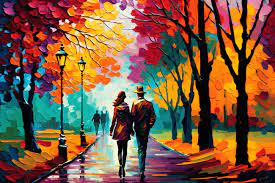Painting, an art form as ancient as human civilization itself, schilderij captivates our imagination with its boundless expression and rich history. From the earliest cave paintings to contemporary masterpieces, this medium has served as a canvas for humanity’s most profound thoughts and emotions. As we delve into the enigmatic world of painting, we uncover its transformative power, diverse styles, and enduring legacy.
The Origins and Evolution
The history of painting stretches back over 40,000 years, with the earliest known works found in the Chauvet Cave in France. These prehistoric murals, depicting animals and abstract symbols, offer a glimpse into the lives and beliefs of our ancestors. Early paintings were created using natural pigments and rudimentary tools, but they were no less significant. They served as both a record of human existence and a form of spiritual or ritualistic expression.
As societies evolved, so did painting techniques. The ancient Egyptians developed a sophisticated system of iconography and symbolism, while the Greeks and Romans advanced the use of perspective and realism. During the Renaissance, artists like Leonardo da Vinci and Michelangelo pushed the boundaries of art, introducing techniques such as chiaroscuro and sfumato, which brought a new level of depth and realism to their works.
Styles and Movements
Throughout history, painting has embraced a multitude of styles and movements, each reflecting the cultural and philosophical currents of its time. The Baroque period, characterized by dramatic lighting and emotional intensity, gave way to the Neoclassical era, which emphasized clarity and restraint. The Romantic movement followed, celebrating the sublime and the emotional power of nature.
The 19th century saw the rise of Impressionism, a revolutionary style that captured the fleeting effects of light and color. Artists like Claude Monet and Edgar Degas broke away from traditional techniques, focusing instead on capturing moments in time. This was succeeded by Post-Impressionism and the advent of modern art movements such as Cubism and Surrealism, which further challenged conventional notions of representation and abstraction.
Techniques and Mediums
Painting techniques and mediums are as varied as the styles themselves. Traditional oil painting, with its rich texture and depth, has been favored by many great masters. The invention of acrylic paints in the 20th century introduced a fast-drying alternative that allowed artists to experiment with new techniques and textures.
Watercolor painting, known for its translucency and fluidity, contrasts with the bold, opaque qualities of acrylics and oils. Each medium offers unique possibilities for artistic expression. Contemporary artists often blend these techniques, pushing the boundaries of what is considered traditional painting.
The Role of Painting in Modern Times
In the digital age, painting remains a vital and evolving medium. While technology has introduced new forms of art, such as digital and virtual art, painting continues to thrive as a deeply personal and tangible form of expression. Modern artists draw inspiration from past movements while exploring new themes and techniques, reflecting the complexities of contemporary life.
Exhibitions and galleries around the world celebrate painting’s rich heritage and ongoing innovation. From abstract canvases to hyper-realistic portraits, contemporary paintings invite viewers to engage with their inner worlds and the world at large. The resurgence of interest in traditional techniques, combined with the exploration of new media, highlights painting’s enduring relevance and adaptability.
Conclusion
Painting, with its ancient origins and ever-evolving techniques, remains a profound and dynamic art form. Its ability to capture the essence of human experience and imagination ensures that it will continue to inspire and challenge us for generations to come. Whether through the intricate detail of a Renaissance masterpiece or the bold strokes of a modern abstract work, painting offers a timeless connection to the human spirit and the world we inhabit.

